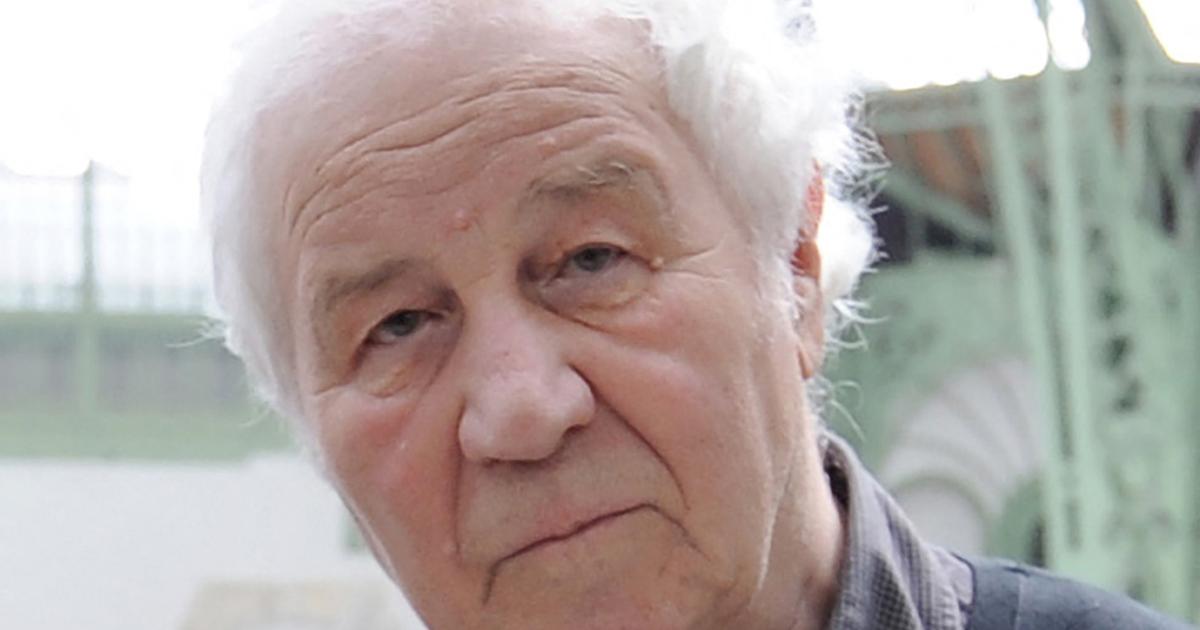Brief press release from the Centre Pompidou, on this sunny Pentecost Sunday, to announce the death, at the age of 89, of Ilya Iossifovich Kabakov, the father of Russian conceptual art and the totemic figure of the arts, Saturday, May 27. This leading man of the Russian scene was born on September 30, 1933 in Dnipropetrovsk, in what would become the Ukraine of the Soviet Union. He first lived and worked in Moscow from the 1950s to the 1980s before emigrating to the United States and settling with his studio on Long Island where he stayed far from the world. "It is with great emotion that we learn today of the passing of Ilya Iossifovich Kabakov, an essential artist for more than 70 years. In 1995, his installation "C'est ici que nous vivre" occupied the entire Forum of the Centre Pompidou for several months. We will dedicate an exhibition to him in 2024," said the Parisian museum.
As part of Monumenta, The Strange City by Ilya and EmiliaKabakov, was presented at the Grand Palais from May 10 to June 22, 2014. A confusing and poetic installation, orchestrated under the combined curatorship of Olga Sviblova, director of the Multimedia Art Museum (MAMM) in Moscow and pillar of contemporary art from Moscow to Venice, and Jean-Hubert Martin who was director of the National Museum of Modern Art. Through a game of impossible architectures and lost angels, flights like Icarus and falls, melancholic drawings, theoretical texts and objects that have lost their function, Ilya Kabakov and his wife Emilia staged their culture, the history of their country at the harshest of censorship, the frenzied imagination that allows to escape everything. The conquest of space brought back to the individual.
Playing with metaphors and humor marked by a sense of the absurd, Kabakov's art told the story of daily life in the Soviet Union, from the most ethereal to the most trivial, from the music of the heavens to the common latrines and its flies, creating a kind of illustrated cemetery of a utopian society that wanted to be modern, egalitarian, new, and that ended up disappearing into a straightjacket. More than an epitaph of the USSR, his work has highlighted the always possible drift of a utopia towards disaster, the germ of destruction being part of any system that becomes unique and therefore authoritarian.
Following him, the writer Svetlana Alexievich, born in 1948 in Stanislav in Soviet Ukraine, recounted in 2013, in The End of the Red Man or the Time of Disenchantment, the implosion of the USSR, after 70 years of Marxism-Leninism and millions of deaths. What remains of Homo sovieticus? Armed with a tape recorder and a pen, driven by attention and critical thinking, Svetlana Alexievich met survivors who lived the story of a great utopia. Their intertwined narratives, without apparent logic or precise presentation of witnesses, redraw the dream and tragedy that was the Soviet Union. And the strange melancholy it has left. This earned him the Nobel Prize in Literature in 2015.
Born to Jewish parents - his mother Bertha Judelevna Solodukhina, was an accountant, his father, Iosif Bentcionovich Kabakov, a locksmith - Ilya Kabakov had a singular way of diverting the object from its use to give it a symbolic value, letting things speak for him (The Shower series, 1965, and his showers eternally without water). He was evacuated during World War II to Samarkand, as was the Leningrad Academy of Art, while his father went to the front. From 1945 to 1951, he returned to Moscow to continue his art studies, initially intending to draw and illustration.
In the 1960s, he joined what would become the Sretensky Boulevard Group, alongside Erik Bulatov, Oleg Vassiliev and Vladimir Borisovich Yankilevsky. To survive the persecution of this legendary Moscow underground group, some of whose members were imprisoned or exiled, Kabakov has often said that he has complied superficially with the rules of the system. In his Russian Series, his drawings move significant details out of the center, opting for detour and allusion. It took a more conceptual turn from the 1970s. Under the influence of structuralists from the West who showed their sympathy for Soviet ideology, dissident artists and intellectuals posed as almost neutral observers of the systems that clashed, Marxism against capitalism.
"Ilya Kabakov, who calls himself a Soviet artist, deviates from the socialist realist path imposed on the senses, recreating in his total installations the psychological effects of an incessant struggle with ideology, and becomes the narrator of the deviations and degenerations it may have engendered on his subjects. He synthesizes the repercussions of this aspiration to the ideal on Homo Sovieticus through the representation of communal apartments, the kommunalki", says Alice Cazaux in Ilya Kabakov, ou le récit de vies communautaires (2013). The Maillol Museum of Dina Vierny (born Dina Aïbinder on January 12, 1919 in Kishinev) exhibited her Kitchen, all hanging utensils and insults between neighbors scribbled on small flying papers, in 2014.
After perestroika and his exile in New York, Kabakov became a page of history. When he had his retrospective at the Garage, the art center of billionaire Roman Abramovich, in the fall of 2008 in Moscow, Ilya composed, with his wife Emilia, a pale gray labyrinth of paintings with fresh colors, partly obliterated, as if all memories were fragments, as if seeing everything, saying everything, was always impossible.

